Desert island exile mooted for Hong Kong feral cattle
A proposal to relocate feral cattle and buffalo herds in South Lantau, now under consideration by Hong Kong officials, has divided people in Mui Wo and Pui O where the bovines roam
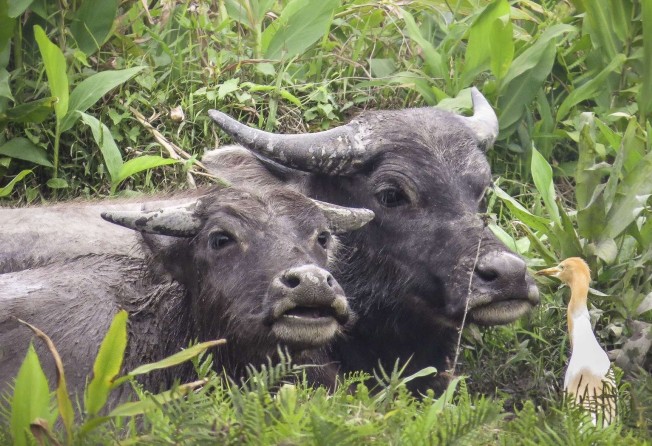
Many of the people who live in or visit verdant Lantau, Hong Kong's biggest island, love seeing its feral cattle roaming and foraging freely. Tourists pat and photograph the cows, which are used to cohabiting with humans. So it’s no surprise that a proposal to deport Mui Wo’s cows and water buffalo to remote Tai A Chau in the Soko Islands, which lacks fresh water to support even a human population, has outraged fans of the island’s bovines.
The Agriculture Fisheries and Conservation Department (AFCD) is considering evicting Mui Wo’s resident herd of 22 cattle and up to seven buffaloes, and their supporters have no doubt the town’s rural committee is behind the initiative.
The docile descendants of cows left to fend for themselves when the Trappist Monastery’s dairy operations were moved from Lantau in the 1980s, and wandering buffalo from abandoned farms, have met with increasing hostility in recent years. The Mui Wo Rural Committee has been pressing the government to get rid of them since 2012, says Ho Loy of the Lantau Buffalo Association (LBA).
“LBA is opposed to any kind of forced removal. It separates them from their traditional foraging trails and is psychologically stressful, especially for the older animals,” she says. “Two older cattle died within a week of being removed to Sai Kung in 2013. We believe forced relocation is a breach of their rights and a danger to their well-being.”
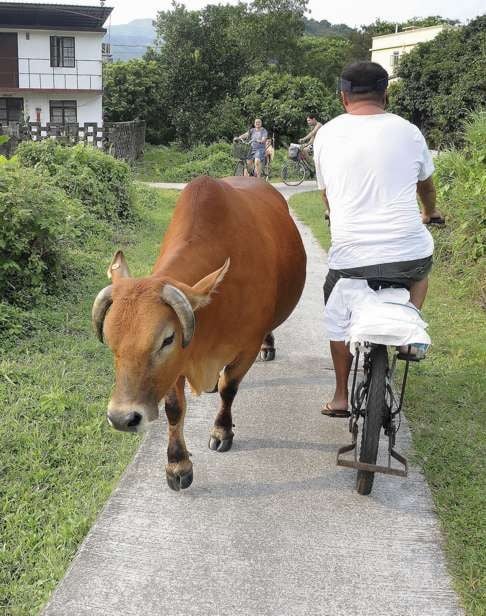
Jean Huang, a Pui O resident and staunch supporter of the wandering cattle, says she learned that the Mui Wo Rural Committee proposed the removal of both the Mui Wo and Pui O herds to Tai A Chau, also known as South Soko Island, which lies a few kilometres south of Lantau.
“Many village representatives agree. They don’t want cows and buffaloes stopping the development, and they have little farmland left. I suspect they have a big development company to support them,” she says.
Southern District councillor and environmental activist Paul Zimmerman agrees with the assertion. “Unless the AFCD has good reason to create a bovine population at Tai A Chau, this plan appears to be pushed by landowners afraid that roaming cattle will reduce the chance of future development rights.”
One man connected to the Mui Wo Rural Committee, who asked not to be named, denies the proposal to move the cows has anything to do with development-hungry villagers. The reasons are far more prosaic, he insists. “The driver is the local community, not the rural committee. They’re talking about segregating animals from people; they are fed up with cattle eating everything in the park and cow poop everywhere.”
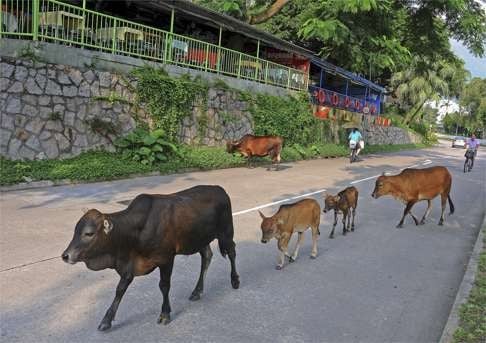
Whoever is behind suggestions to relocate the cattle, the department knows it is up against a pro-cattle lobby that is a force to be reckoned with. Choosing its words carefully, the department says that although some residents consider the Mui Wo herd part of the area’s heritage and want them to stay, others say they cause a “certain degree of nuisance”.
“AFCD has been trying to maintain a dialogue with the Mui Wo Rural Committee and the Mui Wo cattle concern groups, with a view to working out solutions that are acceptable to both sides,” a department spokeswoman says.
The department admits it has received suggestions to consider Tai A Chau as a possible site for relocation, but adds that the feasibility has “yet to be studied”.
“At the moment, AFCD has no plan to relocate cattle to the island,” the spokeswoman says. Nevertheless, site visits to Tai A Chau are going ahead.
The department has sent a notice, containing a thinly disguised plea for moderation, to a local Facebook group, LBA, Protection of Animals Lantau South (Pals) and other cattle support groups calling for a meeting for September 13 at the Mui Wo Sports Centre to discuss the proposal. “Animal welfare groups should restrict their numbers to three representatives per group,” the notice said.
Long before the government-appointed Lantau Advisory Committee unveiled proposals for large-scale development of the island early this year, both the rural committee and the department had been more accepting of the cattle, despite the animals sleeping on an expensive new spongy children’s playground and generous amounts of cow pats dotting Mui Wo’s streets.
Pals founder Jacqui Green recalls how the committee had accepted the department’s initial plan to limit cattle numbers.
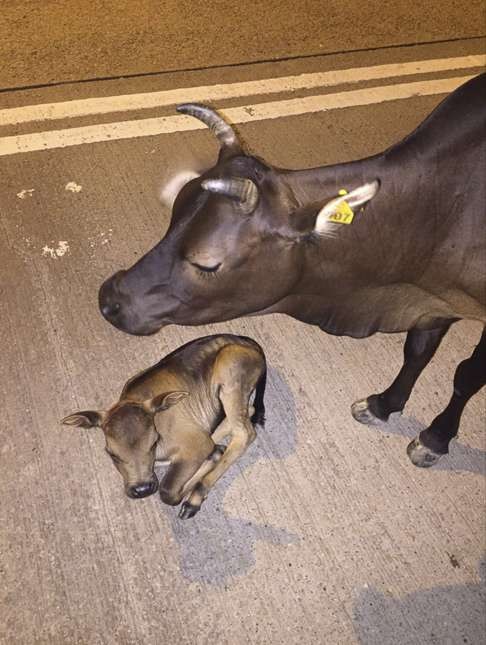
Several years ago, concerned the Mui Wo herd would die out, pro-cattle factions succeeded in halting departmental efforts to neuter the cattle when only two bulls remained. Tempers flared and the vets were often physically prevented from doing their job.
Surgical operations that had been ongoing were suspended and replaced with a trial of contraceptive vaccination. But results show only a 70 per cent success rate.
“Thus, a small portion of vaccinated cattle would remain fertile, keeping the cattle population sustainable,” the department says. It’s not rocket science to work out that a 30 per cent failure rate will prove to be an effective breeding, not a contraceptive, programme. The cattle have a lifespan of 14 or 15 years and the Mui Wo herd has animals of all ages, giving it a chance to live on.
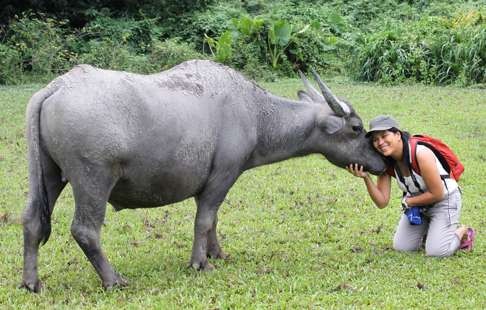
Disaster struck when the department vets castrated the bull, which succumbed to septicaemia and had to be put down. The herd became leaderless, wandering aimlessly and no longer migrating to the hills. Instead, they strayed into the town. When they numbered just 11, it was manageable, Green says. Then they began sleeping on Silvermine Bay beach.
Now, the herd has to navigate roadworks, intensifying construction, traffic and humans twice daily to get to their preferred resting place. “There simply isn’t space for them any more,” Green says. “When we had half the number, we had half the poo and half the problem.” Now, she says, the herd keeps growing, with available space shrinking.
It seems the department’s surgical sterilisation is about as reliable as its contraceptive vaccination. Two weeks ago in Tong Fuk, on the southern coast of Lantau, brown cow No. 507 produced a calf, even though the mother has a hole in her right ear, indicating surgical desexing. The “miracle birth” has become something of a local joke.
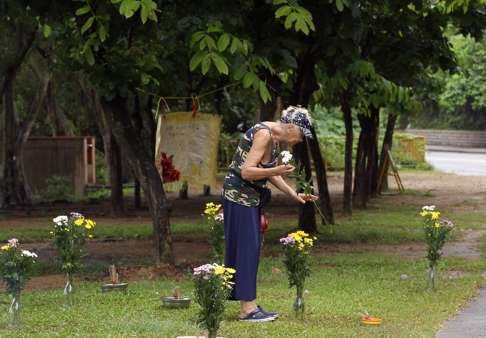
So why banish Mui Wo’s herd to the remote, uninhabited Soko Islands? The department says that since 2011, its “capture-sterilisation-relocation” programme in Lantau – and in Sai Kung, where there are similar issues – has been aimed at capturing stray cattle for sterilisation and relocation to remote districts away from residential areas.
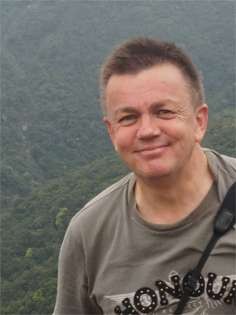
“In the discussion process with different parties in relation to the Mui Wo cattle, Tai A Chau has been suggested as a potential relocation site. Its feasibility, however, is yet to be found out.”
Tai A Chau, small and rocky, is so inhospitable that its handful of residents eventually deserted, fed up of having to ship in fresh water, Huang recalls. It temporarily housed a Vietnamese refugee camp in the 1980s and ’90s. There’s also the spectre of electricity generator CLP Power’s proposal to site a liquefied natural gas terminal alongside the Soko Islands.
The future of Lantau’s other feral cows may also be uncertain thanks to a government scheme to relax restrictions on outside vehicles using formerly closed roads on the island. It could lead to more road accidents, involving humans and cattle, activists say.
Since the Lantau Development Advisory Committee regards the island as a future centre for green tourism, supporters of the cattle suggest keeping and cherishing them as part of the rural landscape, a chance for visitors to connect with living history. But unless action is taken soon, feral bovines look set to be a thing of the past.